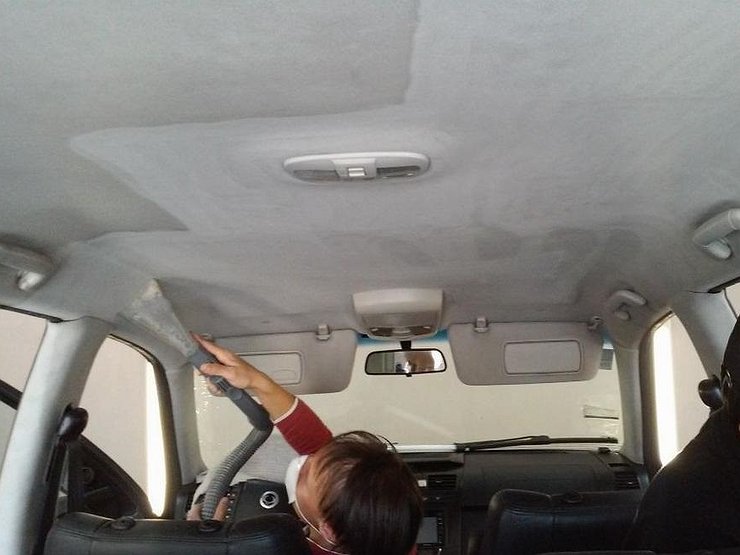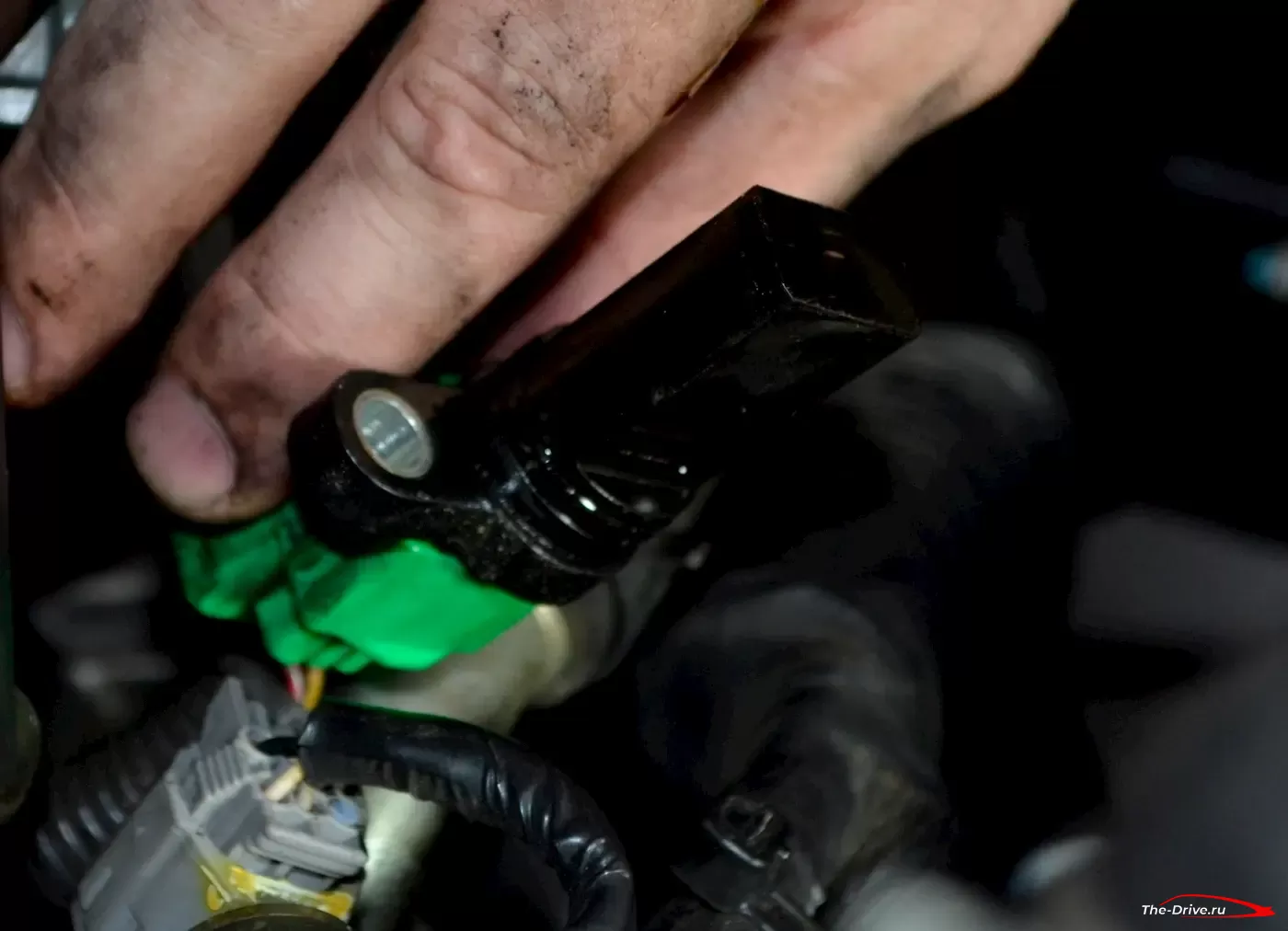
How to clean the inside of a car
Content
The fabric of the car headlining can absorb odors and stain. Use a car upholstery cleaner to clean the interior fabric and roof of your car.
The ceiling of your car interior has a finished look. It is covered in fabric, vinyl, leather, or other types of upholstery that serve several purposes, including:
- Insulation of the car from the cold
- Attenuation of noise and vibrations from outside
- Creating a complete image
- Roof hanging devices such as dome lights and Bluetooth microphones.
The headlining material of your car is known as the headliner. It's not only made of fabric, otherwise it would hang from the attachment points on the ceiling. Roof cladding consists of:
- A hardened base, usually made of fiberglass or other fiber board, molded to shape.
- Thin layer of foam glued to the backing
- Exposed headlining material evenly bonded to the foam
All headlining in your vehicle is made from a single piece. If it is damaged or broken, it must be replaced as a whole.
The ceiling is one of the components of your car that gets little attention. When you wash and clean your car, it is often neglected and becomes dirty and discolored. Its exposed surface is porous and absorbs odors and smoke, retaining the odor for days, weeks, or even forever.
At some point, you may notice that your ceiling is dirty or stinky and decide to clean it. It is quite delicate compared to the rest of the upholstery and requires extra care not to damage it when you are trying to remove stains or odors.
Method 1 of 3: Removing Minor Contaminants
Necessary materials
- microfiber cloth
- Safe upholstery cleaner
If an object hits the headlining, it is possible that when carelessly thrown into the car, it can leave a mark on the fabric of the headlining.
Step 1: Wipe gently. Gently wipe the dirty area with a microfiber cloth.
Shake off loose soil adhering to the headlining. Your goal is to gently remove any loose pieces without rubbing the dirt deeper into the fabric.
If the dirty spot is no longer visible at this stage, you are done. If it's still noticeable, go to step 2.
Step 2: Apply cleanser. Apply fabric cleaner to the stain on the headlining with a cloth.
Turn the cloth over and spray a small amount of upholstery cleaner on it. Lightly paint over a small corner.
Wipe the stain on the headlining with a damp corner of the cloth.
Wipe the headlining fabric with visible fibers, if any.
Press lightly with the cloth. You only need to apply the cleaner to the headlining surface to remove minor stains, and you don't need to soak the foam deep.
Blot the wetted area with a clean, dry microfiber cloth to remove excess moisture.
Wait until the upholstery cleaner is completely dry, then check to see if the stain is completely removed.
If the stain is still there, try the next method.
Method 2 of 3: Clean the Surface
Necessary materials
- Soft bristle brush
- Safe upholstery cleaner
When spot cleaning is not enough to remove a small stain of dirt, the entire headlining will need to be cleaned more thoroughly.
Step 1: Spray the headliner. Spray the upholstery cleaner evenly over the entire ceiling.
Pay special attention to the edges and in the gaps around the light sources.
Functions: Aerosol upholstery cleaner has a foaming action that helps break down trapped dirt below the surface. While a liquid upholstery cleaner with a pump may work, foaming cleaners work best.
Step 2: Let him sit. Leave the cleaner on the upholstery for the time indicated on the container.
Step 3: Shake the ceiling with the brush.. After the sitting time has elapsed, use a small, soft-bristled brush to lightly shake the surface of the headlining.
- Get to each part of the headlining surface with a bristled brush to ensure even cleaning. If you do not brush part of the headlining, this may become apparent after the cleaner dries.
Step 4: Let dry. Let the cleaner dry completely. Depending on how heavily you apply the cleaner, it may take an hour or two to dry.
- Stubborn stains may require re-treatment. Repeat steps 1 to 4. If the stain persists, try the next method.
Method 3 of 3: Perform a deep clean
Using a deep cleaning system should always be your last resort for removing grime from your car ceiling. The heat and moisture from the cleaning process wets the adhesive that holds the layers together, and even a rigid substrate can cause the headliner to sag and fall off, causing permanent damage. The fabric can also come off the foam and interfere with your visibility while driving or just be an eyesore.
Necessary materials
- Deep cleaning system
- Hot water from the tap
- Stain remover
Step 1: Fill up the cleaning machine. Fill the deep cleaning machine with water and cleaning solution.
Use the instructions that came with your machine for the correct ratio of water to detergent.
Functions: Always use the specified brand and type of cleaner for your machine. Replacing cleaners meant for a different machine can result in excess suds or residue remaining on the fabric, which can further stain your ceiling.
Step 2 Turn on the machine. Turn on the machine and prepare it for use according to the instructions. If preheating is required, wait until the machine is ready.
- Attach the narrow upholstery cleaning adapter to the hose.
Step 3: Start with corners. Place the tip of the upholstery cleaner on the headlining. Start from the corner.
Step 4: Drive at a constant speed. Pull the trigger to spray the cleaner onto the fabric surface of the headlining as you move the tool across the surface. Move at 3-4 inches per second so the headliner doesn't soak too deep.
- If the headlining seems to be very wet, drive over it at a faster pace.
Step 5: Coat Evenly. Move across the headliner using approximately 24" strokes. Overlap the next stroke by half an inch with the previous one.
- Let go of the trigger between shots to keep the soapy water from splashing all over the place.
Step 6: Maintain the technique. Make sure all headlining is cleaned using the same pace and technique. Try to keep the same direction with all strokes so they look good once they dry.
Step 7: Let dry. Wait a whole day for the headliner to dry completely. If you have fans, circulate the air inside the car to speed up the drying process.
- Roll down windows to increase airflow if your vehicle is parked in a secure, climate-controlled space.
Step 8: Run your hand across the ceiling. Once the upholstery is completely dry, run your palm over the entire surface of the fibers of the fabric to remove the dried lines left from the deep cleaner.
Cleaning your car's headlining can restore the pleasant aroma and appearance of your car. Follow the steps above to get your headliner back in great shape. If you have cleaned the headlining and find that the car still smells, contact an AvtoTachki certified auto mechanic to find out the cause of the smell.
